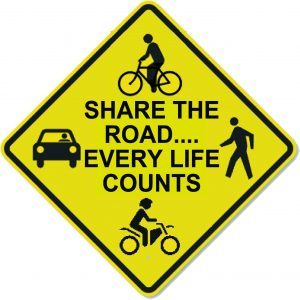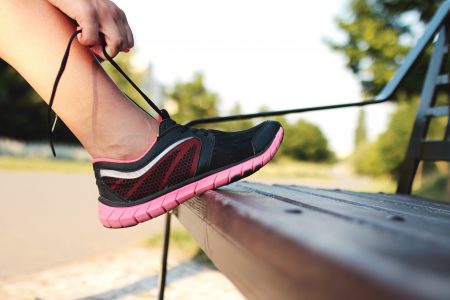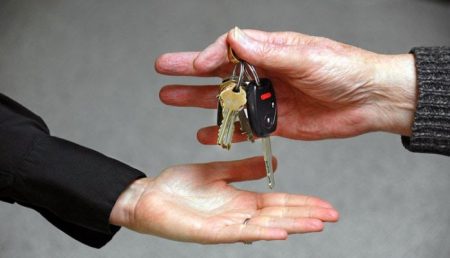Drivers, cyclists, and pedestrians –  We all use the roads and we’d each prefer to do so without the other in the way.
We all use the roads and we’d each prefer to do so without the other in the way.
Sometimes our own actions or the actions of others around us can put us in danger, especially when it comes to sharing the road. Although it is often unintentional, forgetting basic road etiquette can cause yourself or another harm and injury. Here are some safety tips that every motorist should know about sharing the roads:
- Drivers look for pedestrians when making turns, right? So why not take a couple extra seconds to look for a cyclist? The cyclist has the right of way if they are going straight and the driver is turning right.
- Pedestrians have responsibilities too. They should always avoid walking distracted. Keep earbud volume low enough to hear oncoming traffic and do not text and walk.
- If you are a driver approaching pedestrians and/or cyclists, wait to pass them until you have a clear view ahead and are sure there’s no oncoming traffic. A little bit of patience could save your life.
- Signal your turns and do it in plenty of time. Using turn signals is not only a law for drivers but for cyclists as well. By using hand signals to determine which way you are turning, this can alert drivers, other cyclists, and pedestrians when they see you coming.
When you’re behind the wheel of a vehicle, riding a bike or motorcycle, driving safely should always be your top concern. It’s crucial to know the basics of safe driving and practice them every time you’re on the road. This will ensure that everyone can travel and stay safe together.



 Lace your sneakers. Check your watch. Stretch your legs. But before taking a lap around your block, check out our running safety tips:
Lace your sneakers. Check your watch. Stretch your legs. But before taking a lap around your block, check out our running safety tips: June is National Safety Month and there is no better time to brush up on your summer safety skills than right now. Temperatures are rising and schools are closing their doors for the summer. So whether you are at home, on the road or at play, safety should always be your first priority.
June is National Safety Month and there is no better time to brush up on your summer safety skills than right now. Temperatures are rising and schools are closing their doors for the summer. So whether you are at home, on the road or at play, safety should always be your first priority. The first thing you should know is that a person’s age is not and shouldn’t be the reason for taking away their car keys. There are people in their 80s and 90s who have their licenses and drive actively and safely, while there are others in their 50s and 60s who are dangers to themselves and others when behind the wheel. The physical and mental conditions and the persons abilities are the first factors you need to consider. Driving takes dexterity and strength in both arms and legs/feet to be able to control the vehicle at all times. If your physical ability is off then the whole driving performance will be off too, which can cause an accident
The first thing you should know is that a person’s age is not and shouldn’t be the reason for taking away their car keys. There are people in their 80s and 90s who have their licenses and drive actively and safely, while there are others in their 50s and 60s who are dangers to themselves and others when behind the wheel. The physical and mental conditions and the persons abilities are the first factors you need to consider. Driving takes dexterity and strength in both arms and legs/feet to be able to control the vehicle at all times. If your physical ability is off then the whole driving performance will be off too, which can cause an accident 


